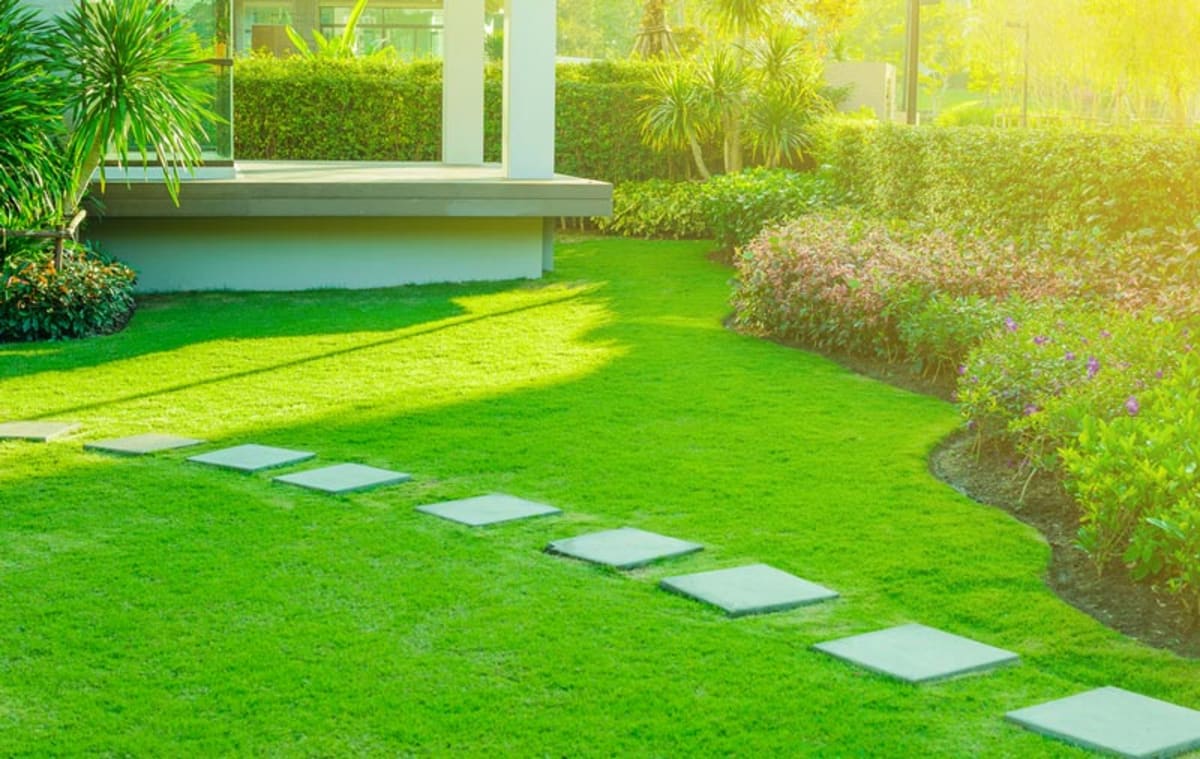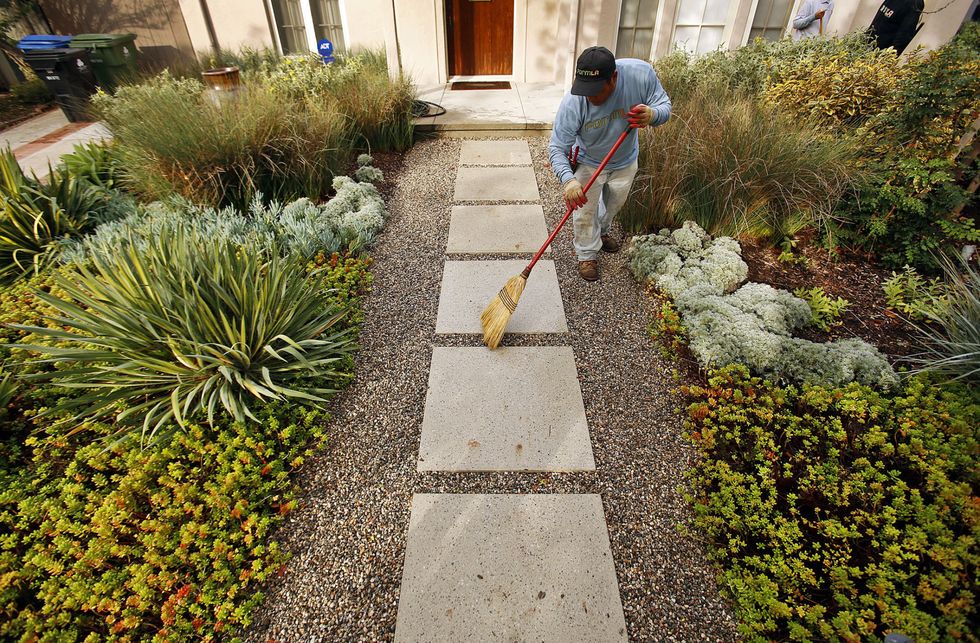Reputable Landscaping Contractor Jacksonville: Enhancing Your Residential or commercial property's Visual Charm
Reputable Landscaping Contractor Jacksonville: Enhancing Your Residential or commercial property's Visual Charm
Blog Article
Elevate Your Property's Visual With Sustainable Landscaping Designs and Eco-Friendly Practices

Benefits of Sustainable Landscape Design
Executing lasting landscaping methods not only preserves all-natural resources yet likewise advertises biodiversity and enhances general ecological health. One substantial advantage is the reduction of water intake with the use of drought-resistant plants, rainfall gardens, and efficient irrigation systems.
Furthermore, lasting landscaping can improve soil health by decreasing using chemical plant foods and pesticides, thereby developing a much healthier atmosphere for plant growth and advantageous dirt organisms. This, in turn, improves the total durability of the landscape to endure ecological stressors and environment change effects - bush removal Jacksonville. Furthermore, lasting landscaping practices can bring in diverse wildlife, including pollinators like butterflies and bees, promoting a more balanced and lively ecological community within the property
Incorporating Native Plants
To build on the advantages of lasting landscape design, a strategic concentrate on incorporating native plants can even more boost ecological resilience and promote biodiversity within the landscape. Native plants are species that naturally occur in a particular area and have developed to flourish in the local climate, soil problems, and ecosystem. By consisting of native plants in landscaping styles, homeowner can minimize water usage, reduce the need for chemical pesticides and fertilizers, and sustain the regional wildlife population.
Incorporating indigenous plants additionally assists in protecting the special personality and identity of an area's plants. These plants commonly need less upkeep when established, making them a lasting and affordable landscape design remedy over time. Furthermore, native plants can bring in indigenous pollinators like and butterflies, contributing to the total health and wellness of the community.
When choosing indigenous plants for landscaping tasks, it is necessary to select varieties that are appropriate to the specific ecological conditions of the website. Consulting with regional nurseries or organic gardens can supply useful support on picking the best indigenous plants for a particular location. By integrating native plants right into landscape design layouts, home proprietors can create gorgeous, lasting exterior spaces that profit both the environment and the neighborhood.

Water Preservation Techniques
Efficient watering approaches play an important role in lasting landscaping methods, guaranteeing optimum water conservation initiatives in outdoor areas. Trickle irrigation supplies water directly to the roots of plants, minimizing dissipation and runoff.
Along with sophisticated watering techniques, xeriscaping is another water-saving landscaping strategy that focuses on using drought-resistant plants, mulch, and reliable watering to produce a low-water landscape layout - landscaping company Jacksonville. By selecting native plants that are fit to the local environment and dirt conditions, homeowner can reduce the requirement for excessive watering, eventually saving water and advertising a lasting outdoor environment
Eco-Friendly Hardscaping Ideas
Enhancing outdoor rooms with environment-friendly hardscaping attributes can add substantially to lasting landscape design techniques. Opt for materials like recovered timber, recycled concrete, or natural stone to minimize ecological influence when taking into consideration hardscaping components. These products not just add an one-of-a-kind visual allure to your exterior room yet additionally lower the demand for brand-new resources removal.
Implementing permeable leading alternatives such as crushed rock or permeable concrete can help in reducing water runoff and advertise groundwater recharge. These choices enable rainwater to seep into the ground, stopping explanation erosion and reducing the concern on stormwater systems.
Integrating native plants right into hardscaping styles can even more enhance eco-friendliness by sustaining local wild animals and decreasing the need for extreme watering or chemical treatments. By incorporating vertical gardens or green wall surfaces, you can introduce a lot more greenery right into metropolitan settings, boosting air high quality and biodiversity.
Incorporating energy-efficient lights, such as solar-powered LEDs, right into hardscaping styles can decrease electrical power consumption and reduced your home's carbon footprint. Prioritizing environment-friendly hardscaping ideas not only boosts the charm of your outdoor room however also shows a commitment to environmental stewardship.
Upkeep Tips for Lasting Landscapes
:max_bytes(150000):strip_icc()/2583801_toddd_60-1-c7bb52ede7254a38bb9cbe1978bc7db5.jpg)
Consistently trim plants to advertise healthy and balanced development and avoid overgrowth that can result in pest infestations or conditions. Usage natural plant foods to nourish the soil and plants without damaging chemicals that can seep into the environment. For hardscaping pop over to this site elements, such as absorptive pavers or rock pathways, routinely tidy them to avoid debris buildup and keep their performance. By staying positive with maintenance jobs, you can protect the beauty and sustainability of your landscape for years ahead.
Conclusion
To conclude, sustainable landscaping methods use countless benefits for homeowner, from improving the visual allure of the surroundings to promoting ecological preservation. By including native plants, carrying my blog out water conservation methods, and utilizing green hardscaping ideas, homeowner can produce beautiful landscapes that are additionally environmentally liable. With appropriate upkeep, sustainable landscapes can add and thrive to a much healthier community for both human beings and wildlife.
In addition, sustainable landscape design can improve dirt health by lessening the usage of chemical plant foods and pesticides, thus producing a healthier setting for plant development and helpful dirt microorganisms.To build upon the benefits of sustainable landscaping, a tactical focus on integrating indigenous plants can better enhance ecological strength and advertise biodiversity within the landscape. By including indigenous plants in landscape design styles, residential property owners can lower water usage, reduce the demand for chemical pesticides and plant foods, and support the local wild animals populace.
These plants typically require much less upkeep once developed, making them a sustainable and cost-effective landscape design option in the long run. By incorporating indigenous plants right into landscape design styles, residential property owners can develop stunning, sustainable outdoor spaces that profit both the atmosphere and the area.
Report this page